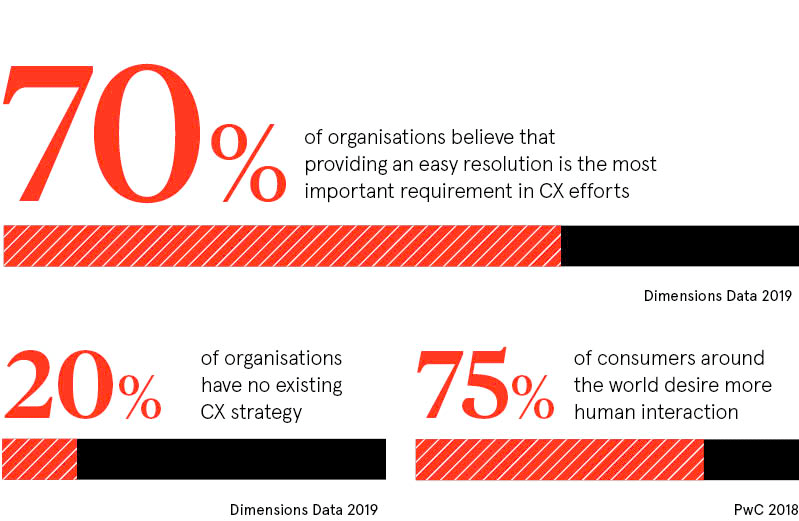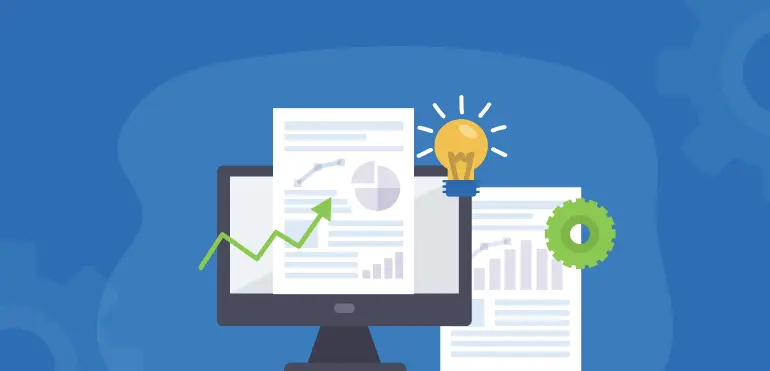Marketers, entrepreneurs, and solopreneurs could consider customer success the be-all-end-all when it comes to their company’s longevity. And they wouldn’t be wrong, especially seeing as the model has shifted from B2B or B2C to H2H (Human-To-Human, that is).
This makes customer success super important, especially when it translates as Conversion Rate Optimization (CRO) success. You see, when you create a great customer experience, it’s improbable for a customer to pick out a competitor’s product over yours.

(source)
And obviously, a human approach to customer success is not only desired but needed to create all the necessary conditions that will lead to business or brand growth.
However, this is not always possible. So, let’s see the types of customer success fails that could cost you your conversion.
What Does the Customer Want?
Ignoring the prospect’s needs to favor your company’s needs is a trap in which many marketers and business owners have fallen at some point in time. However, customer success is not about putting your company first.
When you deal with customer success, you’re essentially trying to get customers on your side. So much so that you need to turn interested prospects into customers and customers into repeaters. This technique will create a sustainable environment for your company to grow, as repeaters are more valuable and acquiring them is more affordable.
Repeaters are people who already know you, have already made a purchase from your brand, and actually enjoyed it; they have – most probably – agreed to be a part of your email list and have followed your social media profiles as well. This means that they’ll welcome all marketing messages you have from them, provided the information is valuable, relevant, and timely.
On the other hand, ignoring your customers’ needs is a surefire way to produce content that won’t make any difference to them.
Creating content that will answer the customer’s questions and meet their needs is essential. This becomes a little clearer when one considers that sales-centric businesses can’t be customer-centric and, therefore, won’t hear the customers’ needs.
A business that won’t promote a product or service relevant to the customers’ needs, won’t curate its email list in a way that will get rid of those non-interested and won’t study the exact place of its prospect in the sales funnel, is a business that won’t hit any sales targets.
All because it failed in customer success.
Who Is the Customer?
Are you sure you know who the customer is? And if so, are you sure you’re attracting the right crowd?
A relatively common customer success blunder is businesses not being sure what their audience is and how to attract the right crowd. More often than not, they end up trying to draw in any type of crowd and considering anyone to be a potential customer.
Before you begin trying to create a successful customer success experience and increase customer loyalty, make sure you’ve studied your customer – or marketing, your call – personas.
To create them – and given the fact that you may not have a steady crowd yet – make sure that you study your competitors’ followers and see the type of need you could fulfill that your competitors won’t be able to.
If you’ve got some customers coming in, you should invest in AI and machine learning tools to study your data. Using such tools will help you segment your audience and create parts so small to correspond with your audience on a one-on-one basis.
Creating small segments and customizing your message for each one is paramount for a business’ success. Think of it that way: if you don’t know who your customers are, you won’t know what your services can offer.
If you don’t know what your services can offer, you won’t see the type of changes your product needs or how to better yourself. If you don’t know your audience, you won’t know how to create a content calendar that will work for both them and yourself. And so on.
And of course, the customer success fail of attracting anyone just to create a large social media following will leave you with just some vanity metrics and not an actual result.
What Did Your Leader Do?
The “bad manager” or “unfit leader” is one of the most common fails in general, and, of course, customer success couldn’t be an exception to this rule.
To create a memorable customer success experience, you will need a dedicated customer success manager – or CSM. This is easier said than done since CSM is a very broad term that one could easily misinterpret.
A CSM leader that prefers to be the “boss” rather than the “coach” could very well be unfit for the position you need them to cover. The same goes for a CSM that prefers data over showing teams how to deal with angry customers or one that leads a group they’re not supposed to be in, in the first place.
Your CSM leader needs to be an expert and have all the necessary knowledge and willingness to better themselves in their position. The leader of your customer success team has to know how to find the root of the problem, should it arise. They also need to engage with both customers and the team itself to uncover what may be keeping customer success at bay.
Companies need CSMs that value customer feedback as much as they value the team’s opinion on that feedback. After all, your company’s customer success team interacts with customers and can point CSMs in the right direction, as far as preventing – or explaining – any loss of revenue and pinpointing the improvements needed.
What Did Customers Think of Their First Interaction With You?
Where customer support solves problems, customer success creates desires that only your brand can fulfill. This is why it’s paramount to know exactly what your customers think of you after their first interaction.
And make no mistake, you don’t want their first interaction with your brand to be with the customer support team. On the contrary, you need something that will keep them engaged and will, in the long run, create a steady customer base.
Customer success is all about creating an additional desire for engagement and interaction before creating a need to purchase. This is why you’ll need to prevent any occurrences that will lead to a customer being dissatisfied. And what better way to avoid that than making sure to follow up?
Following up with your customers, either by phone or by sending an NPS survey – or even a simple email that will urge them to rate their experience with you – will work as a sort of online pr, but it’s not just that.
Your buyers might churn if you don’t make sure to ask them what their feedback is. Not asking, in their mind, is not caring. And you can’t afford to have them think that this is the case, especially when repeaters are the ones responsible for referrals and a pretty big chunk of your growth overall.
So, don’t fall into the customer success trap of not asking how your customers’ experience was with your brand. Instead, try to create a dialogue with your customers – through NPS surveys, social media posts, or even polls on LinkedIn and your brand’s Instagram stories.
A great customer success strategy can buy you time and help you understand your weakest points and what you need to change by collaborating with those who need the change the most – your customers.
So, don’t fall into the trap of making a sale and forgetting the customer altogether.
What Do You Want?
Customers might be the core of your company, but your goals are what will get your venture off the ground. And this can’t happen without clear goals – and, of course, a clear plan for you to get exactly what you want.
Make sure you understand the metrics you need to track and use feedback surveys, such as NPS surveys, to make sure you’re on the right path. Start small. Track one of the segments first and see what factors determined the success or failure. Then try to apply your knowledge to a larger scale.
As a CSM, you need to make sure that achieving milestones won’t do if you have no idea where you’re headed and how your customers can align with your goals.
Defining your KPIs and goals – and making sure you know what you want and the result you want to see – is something you need to figure out before you begin your customer success venture. And it would be best if you kept everyone up to date, from your team members to upper management.
If your KPIs and your desires are aligned and clear to all, then you’ll be able to reach your customer success goals in no time.
All in All
Customer success is one of those fields that can work wonders for your brand or service, provided you make sure they work correctly.
Don’t confuse it with customer service; always make sure that it can work together with customer service, and, in the end, you will see that keeping customers happy will get you what you want.




